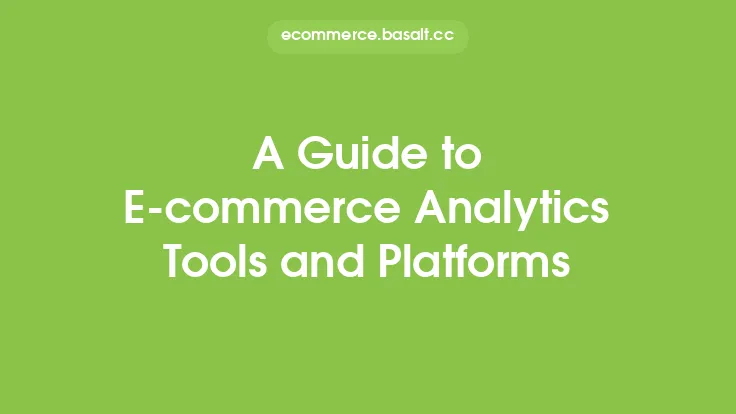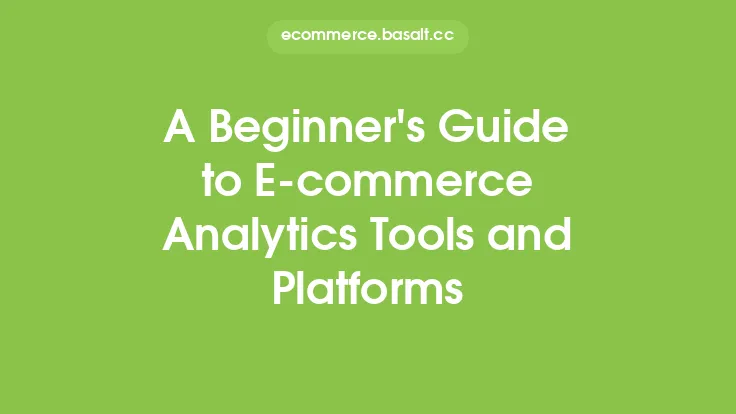To maximize the potential of an e-commerce business, it's crucial to understand the intricacies of the customer journey and identify any roadblocks that might hinder conversion rates. Analytics play a pivotal role in this process, offering insights into customer behavior, preferences, and pain points. By leveraging analytics, e-commerce businesses can pinpoint areas of improvement, optimize their strategies, and ultimately drive more sales.
Understanding Conversion Roadblocks
Conversion roadblocks refer to any obstacles or friction points that prevent customers from completing a desired action, such as making a purchase, signing up for a newsletter, or creating an account. These roadblocks can occur at various stages of the customer journey, from initial awareness to post-purchase engagement. Common examples of conversion roadblocks include complex checkout processes, poor website navigation, insufficient product information, and lack of trust indicators. By identifying and addressing these roadblocks, e-commerce businesses can streamline the customer experience, reduce bounce rates, and increase conversion rates.
Identifying Conversion Roadblocks with Analytics
Analytics tools provide a wealth of data that can help e-commerce businesses identify conversion roadblocks. Some key metrics to focus on include:
- Bounce rates: High bounce rates can indicate that customers are encountering obstacles or frustration points on the website.
- Conversion rates: Low conversion rates can suggest that customers are not completing desired actions, such as making a purchase or signing up for a newsletter.
- Average order value (AOV): A low AOV can indicate that customers are not finding relevant or appealing products.
- Cart abandonment rates: High cart abandonment rates can suggest that customers are encountering friction points during the checkout process.
- Customer satisfaction metrics: Metrics such as customer satisfaction scores, net promoter scores, and customer effort scores can provide insights into customer experiences and pain points.
Analyzing Customer Behavior
To gain a deeper understanding of customer behavior and identify conversion roadblocks, e-commerce businesses can use analytics tools to analyze customer interactions with the website. This can include:
- Clickstream analysis: This involves analyzing the sequence of pages that customers visit on the website to identify patterns and potential friction points.
- Heatmap analysis: This involves using visual representations of customer interactions with the website to identify areas of high engagement and potential roadblocks.
- Funnel analysis: This involves analyzing the customer journey through a specific conversion process, such as the checkout process, to identify drop-off points and areas for improvement.
- Segmentation analysis: This involves dividing customers into distinct segments based on demographics, behavior, or preferences to identify unique pain points and opportunities for improvement.
Fixing Conversion Roadblocks
Once conversion roadblocks have been identified, e-commerce businesses can use analytics to inform and optimize their strategies for improvement. Some potential solutions include:
- Streamlining the checkout process: Simplifying the checkout process, reducing the number of form fields, and offering guest checkout options can help reduce friction and increase conversion rates.
- Improving website navigation: Simplifying website navigation, using clear and concise language, and providing prominent calls-to-action can help customers find what they're looking for and reduce bounce rates.
- Enhancing product information: Providing detailed and accurate product information, using high-quality product images, and offering customer reviews and ratings can help build trust and increase conversion rates.
- Building trust: Displaying trust indicators such as security badges, customer testimonials, and industry certifications can help build trust and increase conversion rates.
- Personalizing the customer experience: Using analytics to personalize the customer experience, such as offering personalized product recommendations or tailored content, can help increase engagement and conversion rates.
Measuring the Impact of Changes
To ensure that changes made to address conversion roadblocks are effective, e-commerce businesses must measure the impact of these changes using analytics. This can involve:
- A/B testing: This involves comparing the performance of two or more versions of a webpage or element to determine which version performs better.
- Multivariate testing: This involves testing multiple variables simultaneously to determine which combination of variables performs best.
- Cohort analysis: This involves analyzing the behavior of distinct groups of customers over time to identify trends and patterns.
- Retrospective analysis: This involves analyzing historical data to identify the impact of changes made over time.
Best Practices for Using Analytics to Identify and Fix Conversion Roadblocks
To get the most out of analytics and effectively identify and fix conversion roadblocks, e-commerce businesses should follow best practices such as:
- Setting clear goals and objectives: Establishing clear goals and objectives helps ensure that analytics efforts are focused and effective.
- Using multiple analytics tools: Using a combination of analytics tools provides a more comprehensive understanding of customer behavior and conversion roadblocks.
- Analyzing data regularly: Regularly analyzing data helps identify trends and patterns, and informs data-driven decision making.
- Testing and iterating: Continuously testing and iterating on changes helps ensure that improvements are effective and sustainable.
- Considering the customer perspective: Considering the customer perspective helps ensure that changes are customer-centric and effective in addressing pain points and friction points.
Conclusion
Analytics play a critical role in identifying and fixing conversion roadblocks in e-commerce. By leveraging analytics tools and techniques, e-commerce businesses can gain a deeper understanding of customer behavior, identify areas for improvement, and inform data-driven decision making. By following best practices and continuously testing and iterating on changes, e-commerce businesses can optimize the customer experience, reduce friction points, and increase conversion rates. Ultimately, using analytics to identify and fix conversion roadblocks is essential for driving growth, improvement, and success in e-commerce.





